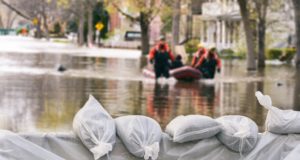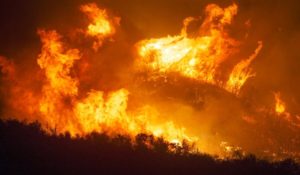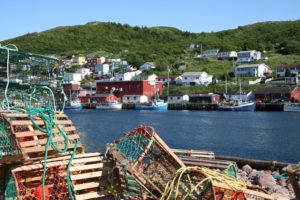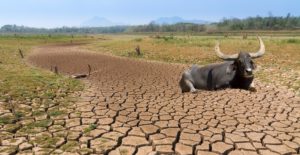A landmark study by the World Wildlife Fund (WWF) titled Global Futures has used cutting-edge modelling to explore the global economic impacts of natural capital depletion, and shows how any chance of resilient economic growth on the planet is tied to the restoration of natural resources.
 It warns of potential risks to the world’s future economic prosperity if we don’t act urgently to halt and reverse nature loss. This echoes the argument originally made back in 2002 in The Restoration Economy, and most recently in RECONOMICS: The Path To Resilient Prosperity (January 2020).
It warns of potential risks to the world’s future economic prosperity if we don’t act urgently to halt and reverse nature loss. This echoes the argument originally made back in 2002 in The Restoration Economy, and most recently in RECONOMICS: The Path To Resilient Prosperity (January 2020).
The study uses new economic and environmental modelling to calculate the costs of nature’s decline across 140 countries and all key industry sectors.
Taking six crucial ecosystem services that nature provides (including the supply of water for agriculture; supply of timber; marine fisheries; pollination of crops; protection from flooding, storm surges and erosion; and carbon storage to help protect us from climate change), the report analyses the future costs to world economies of failing to act on the destruction of our environment and biodiversity loss.
This innovative method of analysis was created through a partnership between WWF, the Global Trade Analysis Project (GTAP) and the Natural Capital Project.
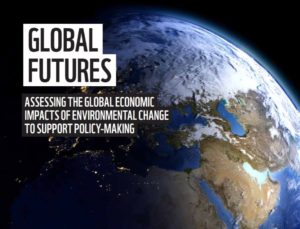 Global Futures adds significant new weight to warnings that the continued loss of nature under “business as usual” will have severe economic consequences, and that investing in nature is essential for future global economic prosperity.
Global Futures adds significant new weight to warnings that the continued loss of nature under “business as usual” will have severe economic consequences, and that investing in nature is essential for future global economic prosperity.
The work comes at a critical time, marking the start of a landmark year in which a series of global policy decisions will be made that will shape humanity’s development and our relationship with nature for decades to come.
WWF hopes that this report, alongside other evidence, will encourage and enable world leaders to take decisive action to restore nature for our future prosperity before it is too late.
The research is timely and poses a stark warning to us all – that unless we reverse nature loss, trillions of dollars will be wiped off the world’s economies, industries will be disrupted and the lives of millions will be affected.
From climate change, extreme weather and flooding, to water shortages, soil erosion and species extinctions, evidence shows that our planet is changing faster than at any other time in history. The way we feed, fuel and finance ourselves is destroying the planet’s life-support systems
upon which we depend. As we enter a new decade, we are not just in an environmental crisis – we’re heading for an economic crisis too.
The research considers the benefits that nature provides to all nations and industries through “ecosystem services” – such as the pollination of crops, protection of coasts from flooding and erosion, supply of water, timber production, marine fisheries and carbon storage. The model then assesses how the natural assets that provide these services (such as forests, wetlands, coral reefs and fish stocks) would change under various future development scenarios and, in turn, how the consequent changes in ecosystem service supply would affect economic outcomes (including GDP, trade, production and commodity prices).
The results show that in a ‘Business-as-Usual’ (BAU) scenario, reduced supply of these six ecosystem services alone would lead to a drop of 0.67% in annual global GDP by 2050 (compared to a baseline scenario in which there is no change in ecosystem services by 2050). This would be equivalent to an annual loss of US$ 479 billion compared to the baseline scenario, assuming an economy of the same size/structure as in 2011 (the latest version of the GTAP database and base year for this analysis).
Over the period between 2011 and 2050, the total cumulative loss would be US$ 9.87 trillion (3% discount rate). Natural assets (or natural capital assets) consist of biological or living natural assets (habitats and species) as well as physical natural assets (such as minerals, water and the atmosphere), which provide services that benefit people. The focus of Global Futures is on biological assets which, if managed sustainably can renew themselves and continue to provide these services (or ecosystem services) in perpetuity, but which are increasingly under threat due to human pressures.
Global price hikes would also be expected for key commodities such as timber (+8%), cotton (+6%), oil seeds (+4%) and fruit and vegetables (+3%), as the world’s agricultural sectors will be hardest hit by the loss of nature’s benefits. Poorer countries would bear most of the costs, compounding the risks faced by millions in already vulnerable economies. Eastern and western Africa, central Asia and parts of South America would be hit particularly hard as a result of the changes in price, trade and production levels (with annual GDP losses of up to 4%).
Countries like the USA, Japan, Australia and the UK would also see large losses due to loss of coastal infrastructure and agricultural land through flooding and erosion. In contrast, in a “Global Conservation” (GC) scenario – in which the world adopts a more sustainable development pathway and safeguards areas that are important for biodiversity and ecosystem services — annual global GDP would be 0.02% higher (US$ 11 billion) by 2050, than in a baseline scenario of no change in ecosystem services, generating an annual net gain of US$ 490 billion per year compared to the BAU scenario.
These figures are highly conservative and should not be considered an assessment of the total costs of nature’s loss for several important reasons. The current model only considers six of the many ecosystem services provided by nature (those for which there is enough evidence to quantify). Nor does it account for the potential effects of “tipping points” – thresholds beyond which habitats change rapidly and irreversibly, such as rainforests shifting to drier and more fire and drought-prone savannahs, making them vulnerable to catastrophic failure of ecosystem services. As future versions of the model address these issues, it is expected that the economic case will be further strengthened.
It’s also important to note that the model is not designed to capture the economic impacts of all environmental changes that the planet is undergoing (e.g. climate change and water scarcity), just those associated with changes in specific natural assets. The results must therefore be considered as one part of the economic case for tackling the global environmental and climate crisis, pinpointing risk hotspots and vulnerable groups that could gain most from protecting nature.
This report comes at a critical time, marking the start of a landmark year for the future of our planet. During 2020, political leaders and negotiators will meet to discuss a series of important global policy outcomes regarding nature, climate and development.
As last year’s landmark global assessment from the Intergovernmental Science-policy Platform on Biodiversity and Ecosystem Services (IPBES) warned, and this report underlines, current levels of ambition are not enough.
To reverse nature’s decline, and for humanity to enjoy a sustainable and prosperous future, we urgently need transformational change across our
economic and financial systems, so they are geared towards delivering long-term sustainable development, and the protection and restoration of nature.
We need to agree to a New Deal for Nature and People to reverse the loss of biodiversity by 2030 and put nature on a path to recovery for the benefit of people and planet. The ambition is that this report, alongside other evidence, will encourage and enable world leaders to take decisive restorative action before it is too late.
Featured photo of bridge by esudroff from Pixabay.


